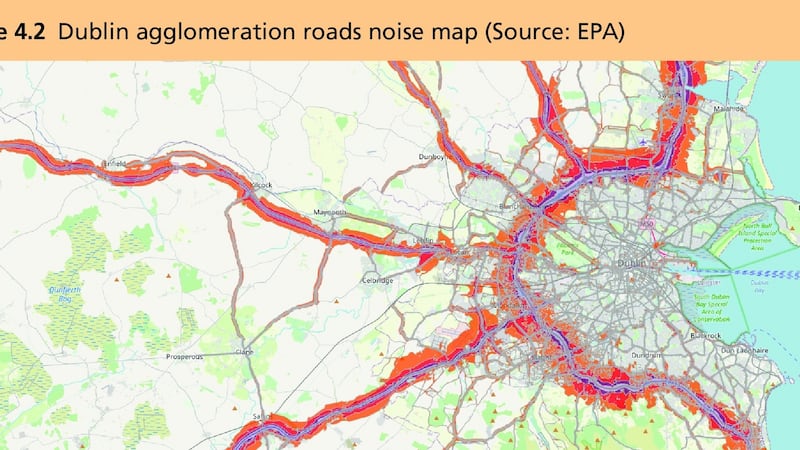Noise pollution complaints from the Irish public have been increasing and current control measures “do not always allow for them to be adequately addressed”, according to the EPA.
Local authorities “need to take a much stronger leadership role in dealing with noise issues, particularly in more urban areas”, it concludes in its latest detailed evaluation of Ireland’s environment.
The report by the EPA, which is the national authority for overseeing implementation of the environmental noise regulations, confirms 2018 findings by the World Health Organisation, which showed noise pollution in towns and cities was increasing – and "how excessive noise, particularly from transport sources, has negative impacts on human health and wellbeing, adversely affecting sleep and cardiovascular and metabolic function".

A 2019 study found night-time exposure to high levels of road traffic noise affects more than 78 million people in the 33 member countries of the European Environment Agency.
Noise complaints around Dublin Airport "have become a more significant issue in recent years, with the Dublin Airport Authority logging 1,453 noise-related complaints in 2018, although there has clearly been a major reduction in airport activities during the Covid-19 pandemic", it adds.
Responsibility for preparation of "strategic noise maps" lies with designated noise mapping bodies, including Transport Infrastructure Ireland; local authorities, Irish Rail and the Dublin Airport Authority. They can be viewed on the EPA website maps section under "environment and wellbeing – noise".
Strategic noise maps show noise exposure levels. They are prepared using computer modelling techniques that include various types of source data to estimate noise levels including traffic flow, types of road and rail, types of vehicles and vehicle speeds.
“National noise planning guidance for local authorities are needed,” the EPA report concludes. “This will support and promote the proactive management of noise where it is likely to have significant adverse impacts on health and quality of life.”
Noise objective
The guidance will also help to implement the noise objective in Project Ireland – National Planning Framework 2040, it suggests, and should consider adopting 2018 WHO noise and health guidelines.
“Integrating air pollution and noise mitigation measures (and climate actions), particularly in transport management, can bring many benefits,” adds the report entitled Ireland’s Environment – An Integrated Assessment 2020.
Such integration of options could be explored under the plans for a clean air strategy for Ireland, the EPA says. “Local authorities should also designate quiet areas in their cities for health and wellbeing value.”
Dublin City Council has identified eight "quiet areas" and uses its noise action plan as a tool to preserve tranquil areas with existing low levels of environmental noise. It has focused particularly on public parks in the city, aiming to provide quiet and peaceful spaces for people to escape to from the wider urban area with its higher levels of environmental noise, the EPA points out.
Dublin City Council set noise thresholds to help in the designation of the quiet areas. The designation is considered in the context of any proposed future development in the vicinity of these quiet locations to determine whether it might have the potential to negatively impact on existing noise levels.
The EPA also highlights experimental works to reduce noise levels along 100-metre stretches of the Luas Green Line in Dublin. Installation of "rail dampers" and absorbing rubber infill panels achieved significant noise reductions. "These findings are being used when considering acoustic mitigation measures for future Luas lines," it notes.











